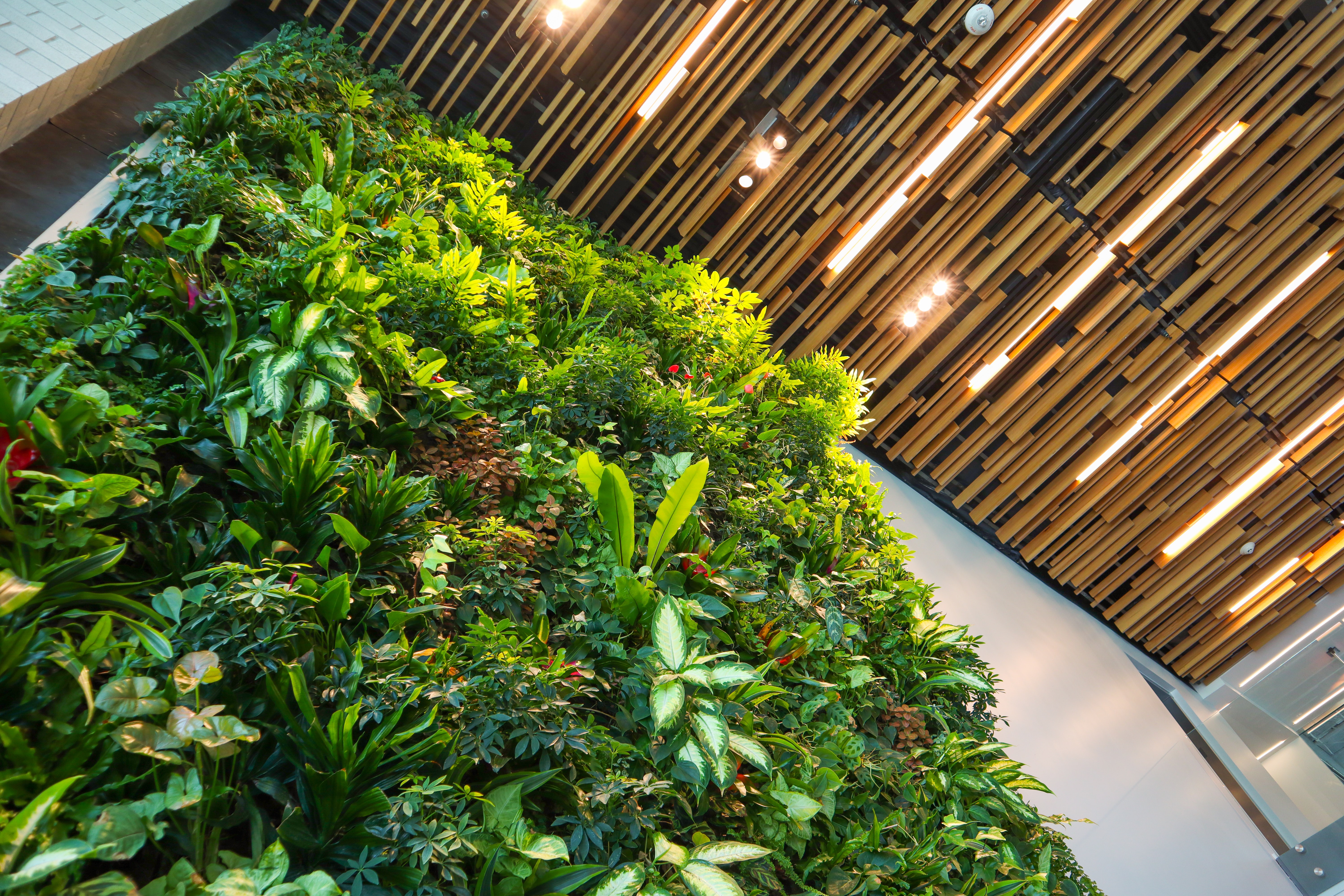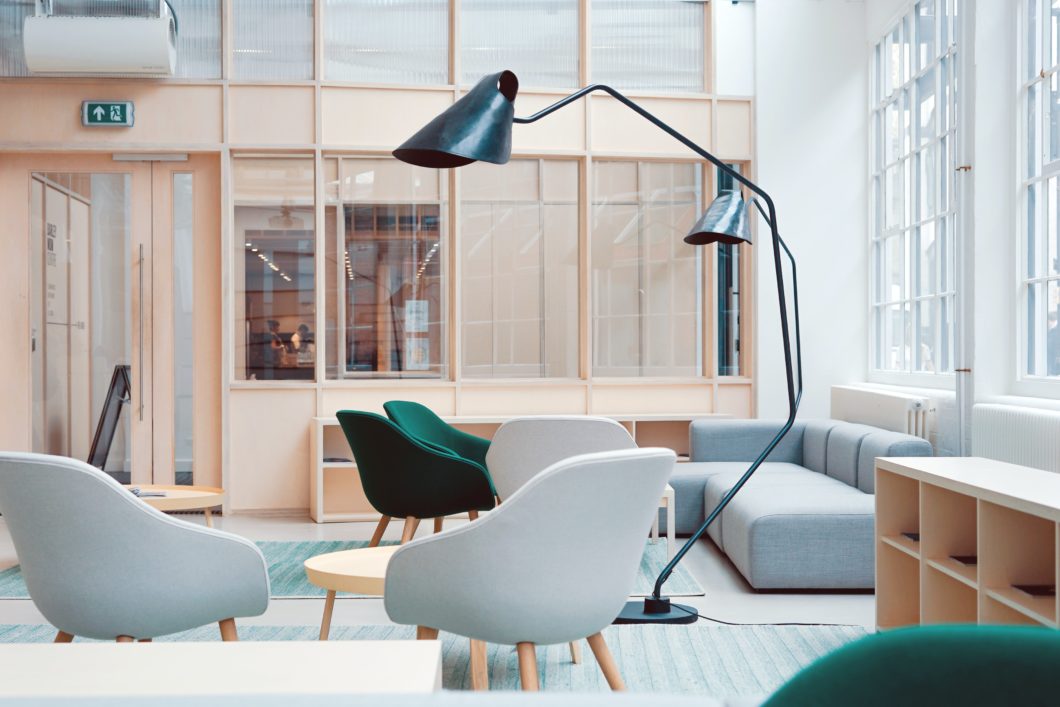When designing a sustainable office, consider the building, fit-out materials, workplace behaviours, and company culture to reduce your carbon footprint.
By Making Moves London
March 21, 2023
So, you know that a sustainable office design will benefit the planet as well as your business, but you’re not sure where to start. Well look no further, for we have helped many businesses design sustainable offices, fit for their business needs as well as those of future generations. Climate change is an increasingly worrying problem – with record temperatures and increasing natural disasters, the faster we can all do our bit to build a more sustainable future, the better.
Keep reading to find out how to design a sustainable office space of your own, what to consider, and how to get the most from your new space.
You’ve probably seen the term ‘sustainability’ crop up more than ever in the worlds of fashion, food and transport recently– but it’s not just the latest business buzzword, with the United Nations describing it as the “defining challenge of our time”. Human activity is the main cause of climate change, and every action we complete directly impacts the speed of climate change – whether at home, or in the workplace.
It’s quickly becoming more important than ever to act sustainably and make sure we can maintain a livable planet for future generations. Sustainability is the key to the future, so future-proof your business with a sustainable office space. According to the UK Green Building Council (UKGBC), buildings account for nearly 25% of all greenhouse gas emissions in the UK – with offices being in the top 5 energy-consumers in non-domestic sectors. Why is demand for sustainable practices rising? Because of the effect the built environment has on the planet.
The United Nation’s 17 Sustainable Development Goals that form its 2030 Agenda for Sustainable Development are a great place to start – covering topics like ‘responsible consumption and production’, ‘affordable and clean energy’ and ‘good health and well-being’ (just to name a few).
As with any goals in business, your sustainability goals are more likely to be met if they are achievable (think SMART: Specific, Measurable, Achievable, Realistic, and Timely) and if all your staff are on board with achieving them. For a truly sustainable business, the design of your office is paramount – with many companies including their office fit out and property strategy within their Corporate Social Responsibility (CSR) and Environmental, Social & Governance (ESG) responsibilities.
At its core, sustainable design considers every single way your business impacts on the environment, with the aim of reducing any damaging effects it has – from the type of lights you have fitted, to the type of energy you use to turn those lights on. Considering the energy efficiency, air quality, lighting, water, and the materials within your office can all affect the sustainability of your office – some even affecting the planet positively.
Not only does choosing more eco-friendly suppliers help save the planet, but it can also help save you a few precious pennies along the way – as well as improve employee health and well-being. The influence on the well-being of your workforce can directly impact on the amount of outgoings you have on staff turnover or sickness – studies showing that happier, healthier staff are more motivated and have greater productivity – thus further benefiting the business.
At Making Moves we have also found that the focus on your employees’ wellbeing in turn has a positive impact on their engagement with the office relocation or fit out process. In addition, we have saved costs on our own fit-out and minimised impact on the environment through actions such as re-upholstering all of our furniture rather than buying new pieces.
It’s a win-win – maximising the benefits for your team and profit margins, whilst minimising your impact on the environment.
There are three key stages involved in moving towards a sustainable office space. Before considerations such as material and fittings this process starts with building selection. From there, considerations for sustainability must be built into your brief for an office design and fit out and the third stage relates to how that brief is brought to life through the delivery of your office fit out.
Paying attention to sustainability considerations at each stage can be the difference between choosing and designing an office that pollutes the environment, or one that works hard to protect it.
Identifying a shortlist of buildings which meet your criteria and can cater for your occupational requirements is key. As an occupier, it can be difficult to directly improve the energy efficiency and air quality of your building given you are limited by the building infrastructure. However, now more than ever, landlords monitor energy usage within the building and this data can be made available to the occupier in order to encourage behavioral changes within the workplace, which will inevitably lead to reducing your environmental impact. This is paramount if your business is aspiring to meet certain certification, such as B Corp for example.
Considerations for selecting a sustainable building for your office space may include the following:
Check out our in-depth guide for more information on criteria for selecting a sustainable office space.
Our project managers within the Making Moves Technical team will challenge you to consider your sustainability goals at this stage. To collate a clear set of measurable goals within your briefing document will provide tendering designers with a well-defined design ethos that will translate into a high quality, considered fit-out proposal.
Some of the themes outlined within the design brief may include the following:
It is important to source your materials sustainably – by using local, eco-friendly suppliers when possible. Look for those with certifications from recognised bodies that can certify the social and environmental impact of their products. The more local your suppliers are, the lower the carbon footprint of your furniture will also be – as less energy will be used throughout the delivery process.
Our Technical team challenges all design and build contractors on ensuring any new furniture is sourced within the UK.
Where possible, avoid contributing to landfill and adopt a circular economy approach by repurposing and reusing existing furniture – which also saves you money on new furniture you may not necessarily need. In addition, opting for more durable materials means that they will last longer, avoiding the need to regularly replace them and further contributing to landfill.
The chemical make-up of materials used is also a consideration alongside where they are sourced from. Materials like paints, furniture, carpets and equipment can all emit toxic chemicals and emissions. Despite these chemicals being released in small quantities, they can still be harmful – especially for people that suffer with respiratory problems already. Instead, stick to materials that emit low emissions by looking for those with low VOC (Volatile Organic Compounds) levels.
Consider also the lifecycle of the materials you choose within your new fit-out, avoiding hazardous materials and those that cannot be recycled where possible.
Any materials and furniture which cannot be reused or repurposed within the new office space need to be appropriately streamed to ensure that landfill waste is minimised and recycling of waste is maximised. Hazardous materials should also be appropriately disposed of.
Careful planning and attention to detail during the construction period will help deliver a fit-out that meets the sustainable goals your business set during brief development. Ensuring the new office is designed with flexibility in mind to enable your business to mold and adapt the space as you growth in the foreseeable future is essential.

Beyond the bricks, mortar, furniture and fittings that make up your office – consider finishing touches that will promote sustainable behaviour among your employees.
Taking steps such as going paperless, ensuring easy access to recycling bins, encouraging the use of refillable bottles and KeepCups all work towards the goal of reducing waste and your employees potential impact on the planet during working hours. For more tips, check out our top 10 quick wins for a more sustainable office environment.
Finally, ensure you design your new sustainable office with the culture and well-being of your employees in mind. Many well-being initiatives, such as bringing plants into the office (biophilic design), and making the most of natural lighting, are likely to align with your sustainability goals.
Engaging your staff with your sustainability goals can really help bring everyone together and get them behind the business’s efforts – decide together what initiatives and charities the business wants to support. Employees that know they are working in a business that values sustainability are more likely to feel happier, and more motivated in their roles.
Research from the University of Exeter showed that introducing plants into office spaces increased productivity by 15%, and a separate report from EcoBusiness suggests that productivity increases by up to 40% when employees have plenty of natural daylight to work within. These figures show that not only can sustainable offices benefit employee well-being, but they can also boost the bottom line of the business – leading to greater levels of productivity, and lower costs of staff sickness and turnover.
Well, there we have it – that’s the long and short of designing sustainable office spaces. We hope you now feel empowered to utilise some of these methods within your own business, knowing the benefits they can offer and all the factors that are important to consider. Here at Making Moves, we have helped many, many businesses design their new sustainable office spaces – so if there’s anything else you need help with, get in touch today!

🚚 Source, negotiate and manage entire office moves.
🏢 Dispose, sublet or redesign your office.
🖊️ Professional, independent support.